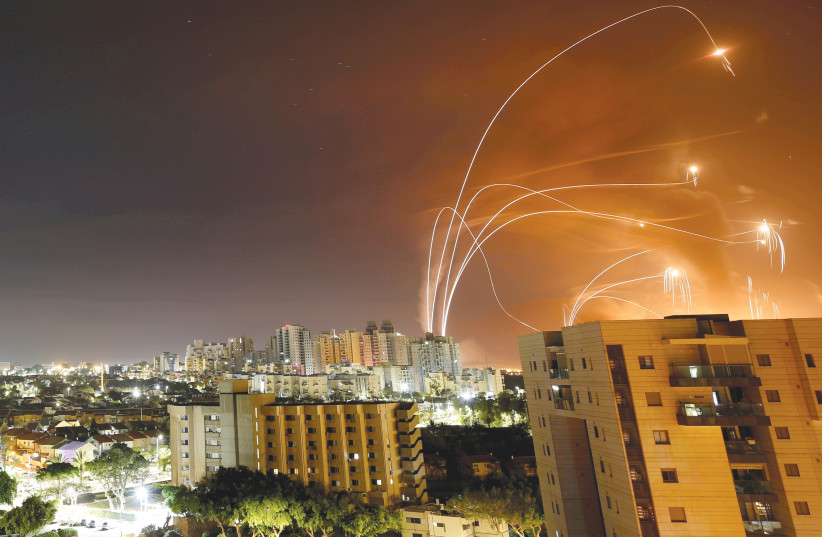In the history of warfare, game-changers were not always designed to have that effect. But sometimes they had a profound impact on the course of warfare. Defense Minister Benny Gantz has commented on the latest Israeli anti-missile laser test: “energy-based weapons with a powerful laser are, in my opinion, a very significant game-changer...”
When Israel upgraded its Air Force in the 1960’s, it wasn’t designed to be the decisive arm of the IDF. That was left to the armored corps and Israel’s tank units. In the Six Day War, the exceptional performance of the Israeli Air Force, particularly in the Sinai Peninsula, led many to see Israel’s Mirage fighters as a new decisive weapon. However, by 1973 a new weapon was seen as taking over the future battlefield: the ballistic missile.
General Chaim Herzog wrote the authoritative history of the outbreak of the Yom Kippur War, he traced it to the supply of Soviet SCUD missiles to Egypt just before the war. The Scud had an attribute which was lacking from the Egyptian Air Force at the time: assured penetrability of Israel’s air space.
From then on, Israel had to find a way to neutralize the ballistic missiles in its adversaries’ weapons stocks. Until that time, in the ongoing struggle between offense and defense on the Arab-Israeli battlefield, the Scud gave offense a built-in advantage. It was dirt cheap, costing a few hundred dollars. And in the last decade Hamas and its sister terror groups have been able to pound Israeli cities with near impunity. Something was needed to deny these organizations the new advantages they were obtaining with the weapons they were using.
Now, with production of a new generation anti-missile system based on lasers something entirely different is being introduced into the military balance. The US and Israel worked together on the Nautilus laser in 1996. They tested the system at the White Sands testing range in New Mexico. True, it downed everything that was thrown at it from mortar shells to actual rockets. But it was cumbersome and its technology was not yet ready to make the strategic difference that Israel sought. Nonetheless, the lower cost of laser defense is part of the new advantage that it could provide to Israel if its technology will be judged as being ripe.

With Iron Dome, for example, each Tamir interceptor shot can cost $80,000 per missile. If the IDF wanted to save money and make its missile defense units more cost-effective, it had to find a formula for using them more sparingly, firing them only when it was determined that the destructive results of an incoming attack warranted their use. That was the technological breakthrough with Iron Dome, because it could discern when a Hamas rocket would hit a populated area or would just explode in an empty part of desert with no casualties or damage to property.
Today, when the latest-generation laser defense is used, then the military calculus of Israel can change radically. The cost of each laser shot drops down significantly to less than $5.00 (NIS 15), according to Prime Minister Naftali Bennett.
There is another factor that needs to be taken into account. The strategic background of the last effort to develop laser defenses was the Cold War. The West recognized that the Warsaw Pact was examining how to deny NATO the ability to reinforce its armies by using ballistic missiles against them. Today, the strategic context has changed. Rockets and ballistic missiles are being employed by Iranian proxy forces like Hezbollah, Hamas, and especially the Houthis in Yemen.
The Houthis have also successfully fired armed drones at the heart of Riyadh and at Abu Dhabi. Unquestionably, Bahrain and Kuwait are next in line having faced active insurgencies in the last few years. There is a collective interest among Israel and the Gulf states to deny Iranian allies the ability to hit their most sensitive infrastructures. The Abraham Accords have created new regional possibilities for marrying up Israeli technology with the financial power of the Arab Gulf states. This is the real game-changer that is emerging now.
The writer is the president of the Jerusalem Center for Public Affairs. He served as Israel’s ambassador to the United Nations and as the director-general of the Ministry of Foreign Affairs.
